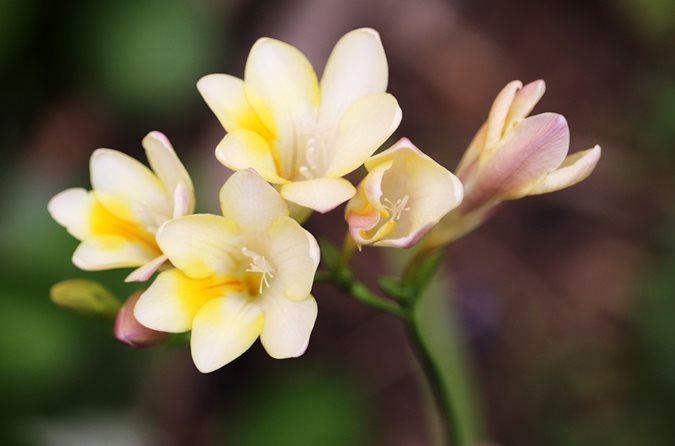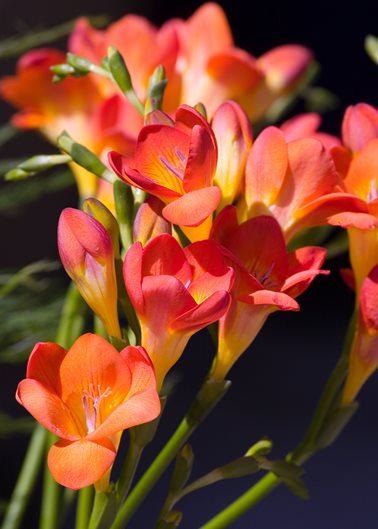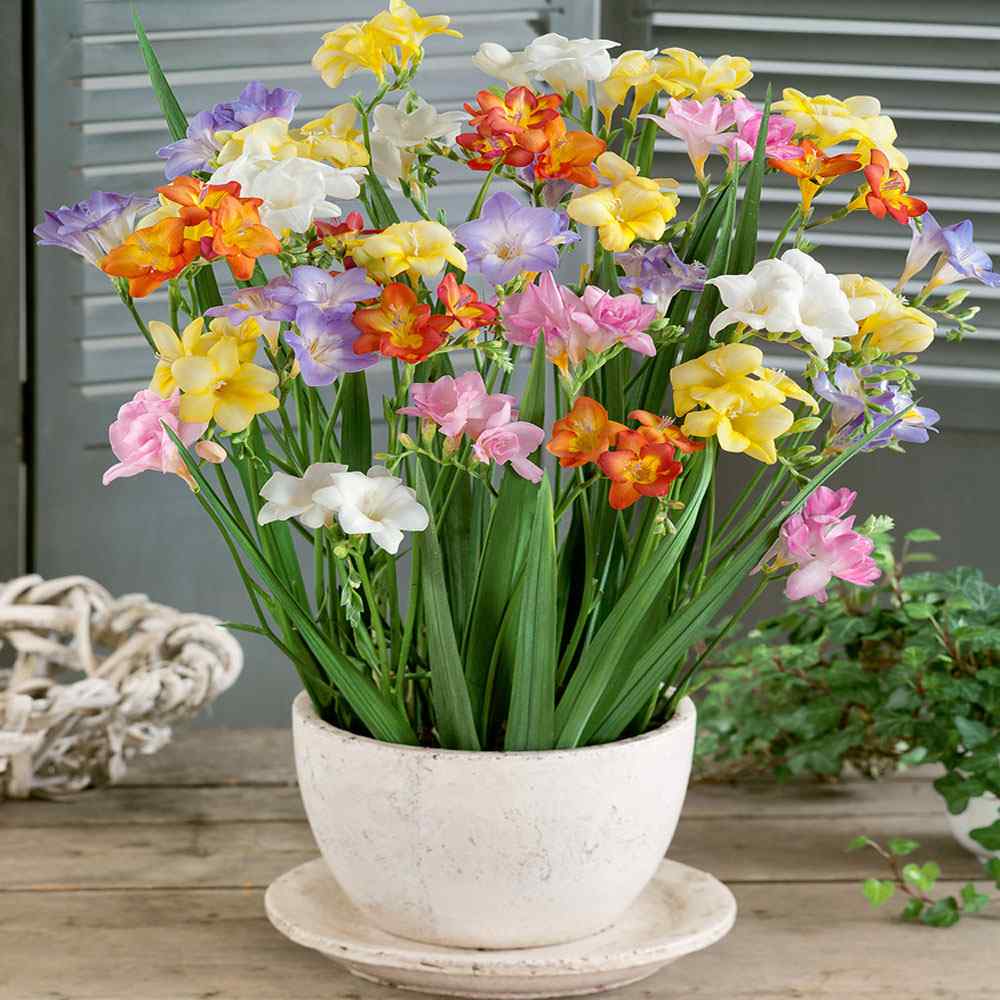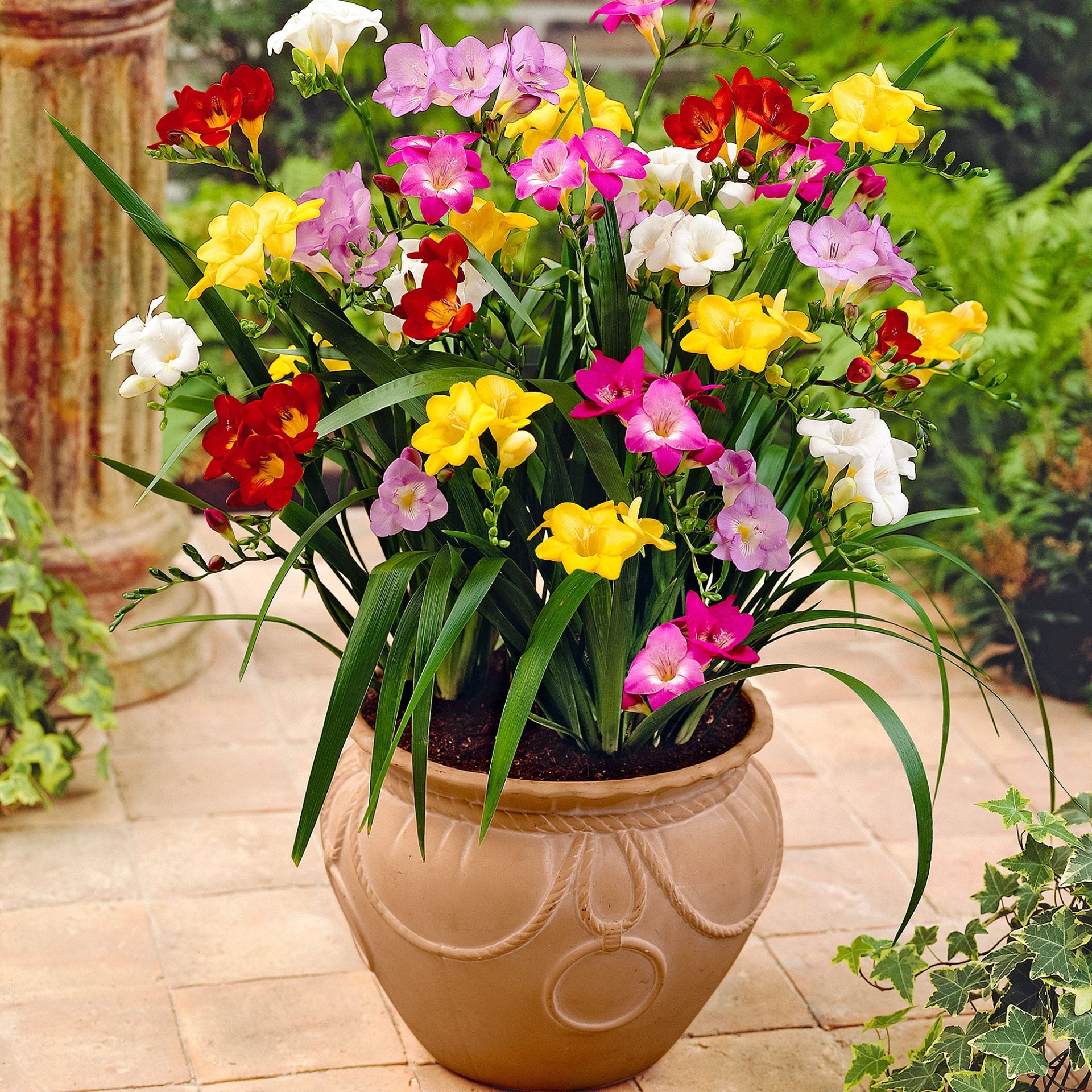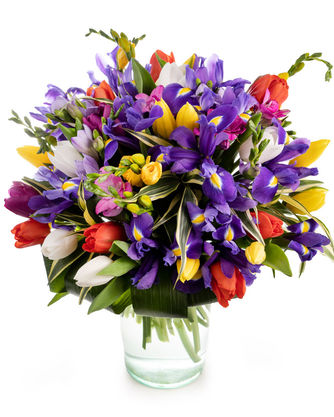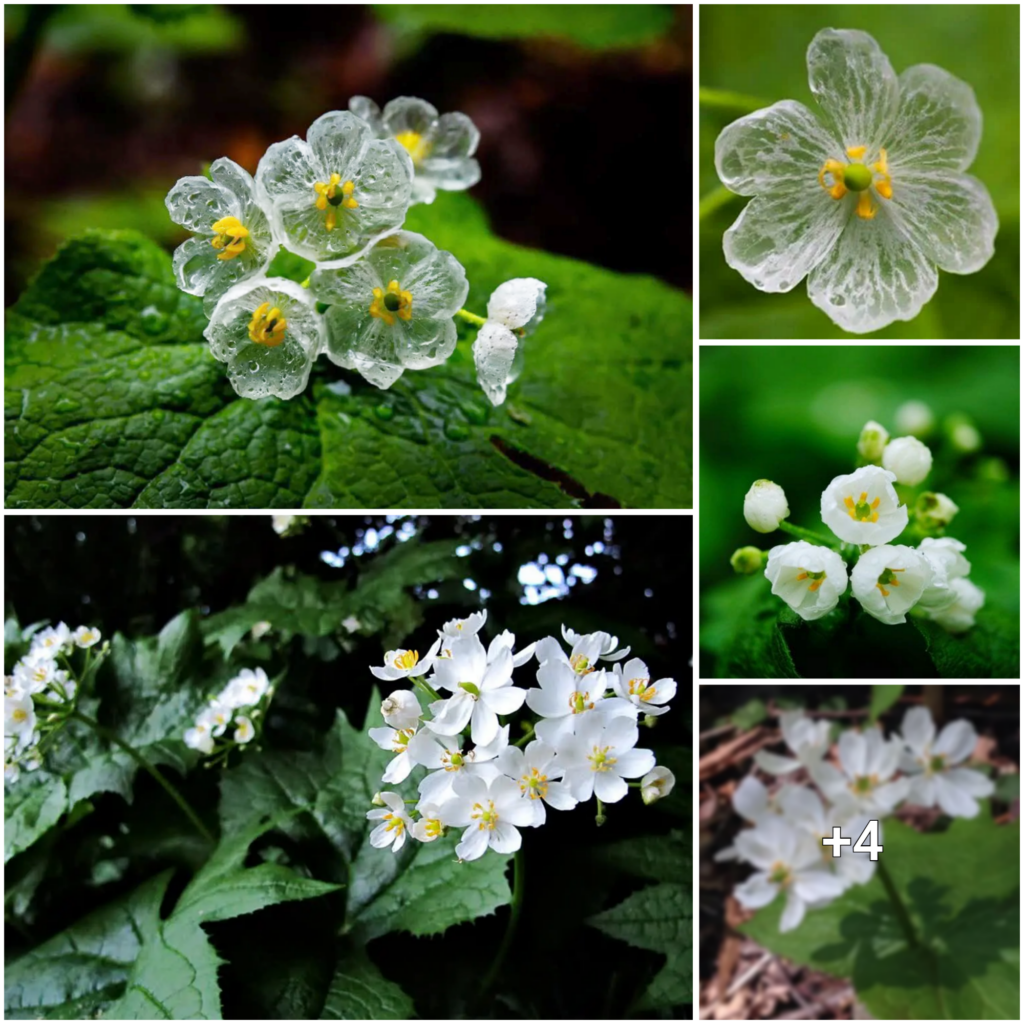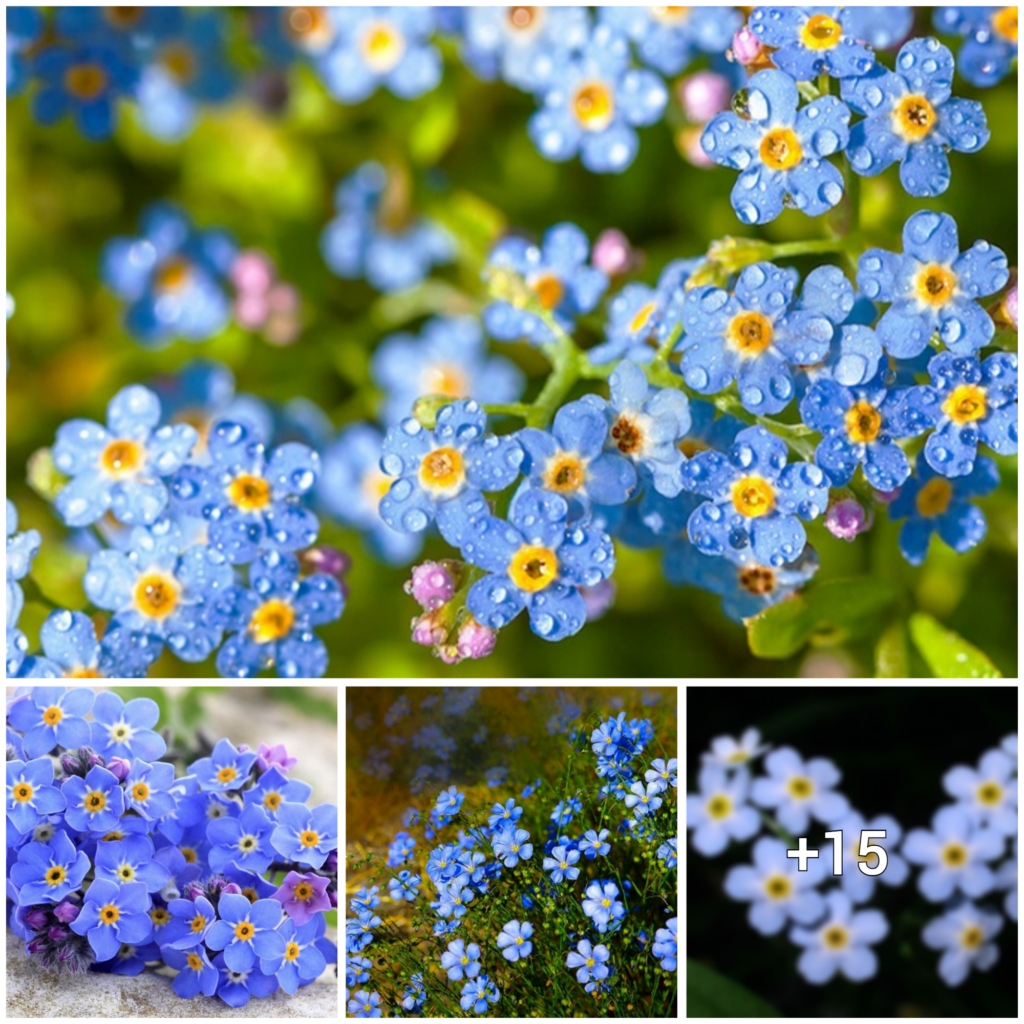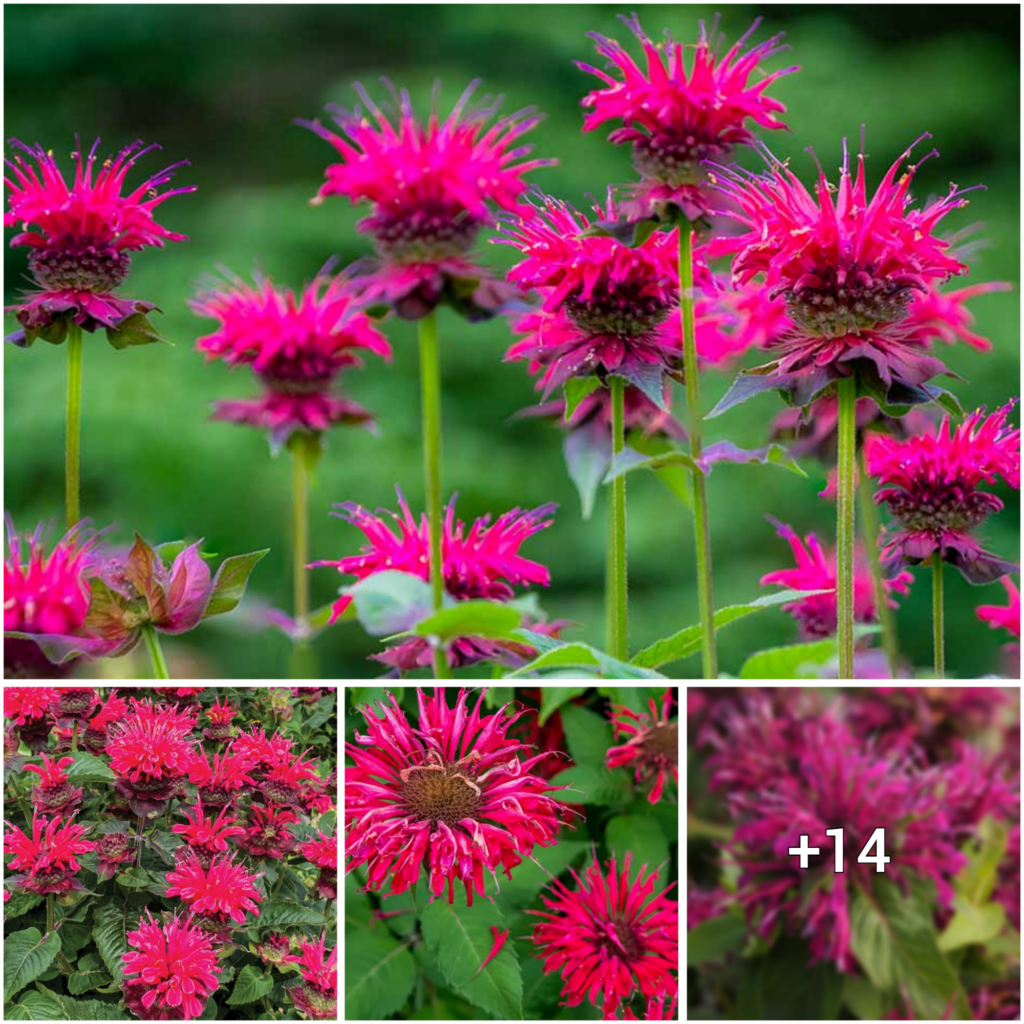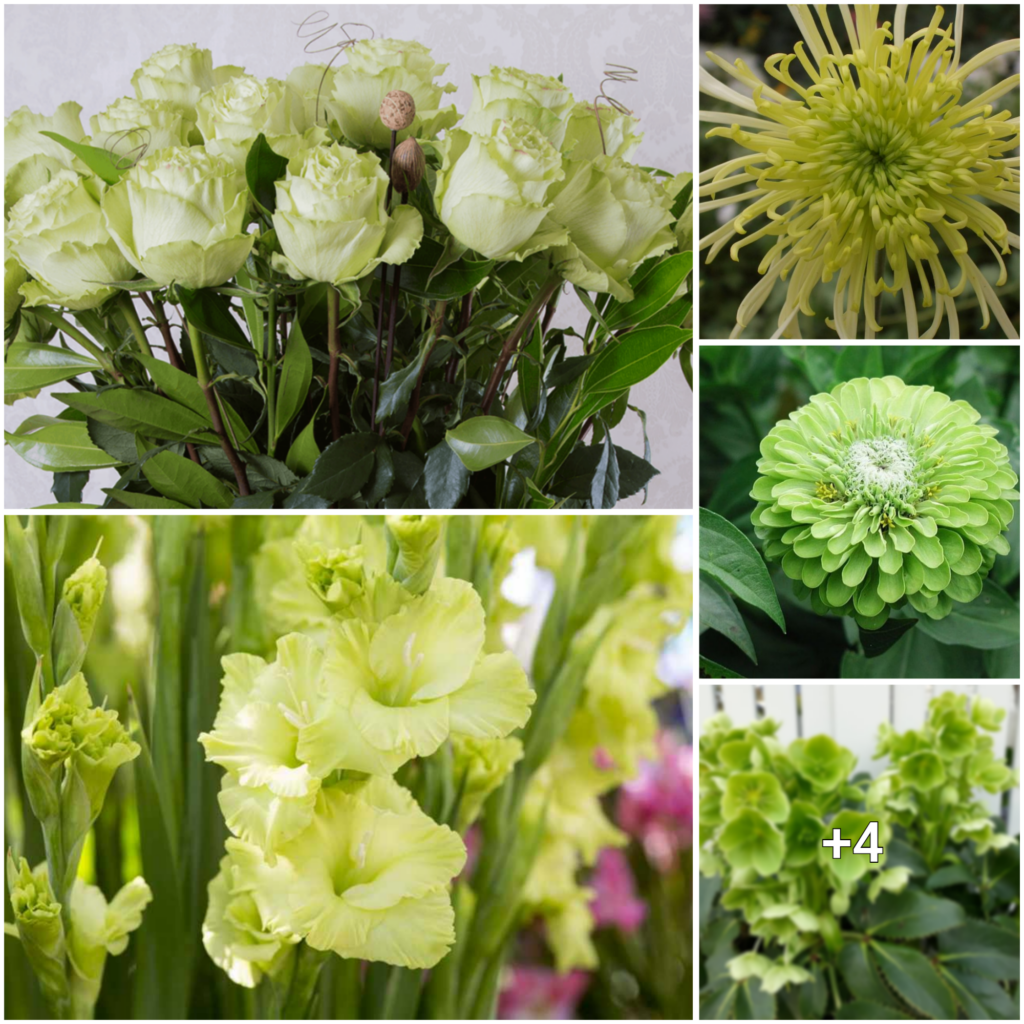Planting freesia is easy. Simply place the tubers in the ground after the last frost, around April or May. If you planted them in pots during the previous autumn or for growing in the greenhouse, plant five tubers per 11 cm (4 inch) pot, with the pointed ends about 2½-5cm (1-2in) deep. Keep the newly planted tubers moist and shaded. When they start to sprout, move the pots to full sunlight and continue watering.
If you planted freesia from September to November, leave the pots outside while the temperature ranges between 10-17°C (50-62ºF), then take them inside in winter to avoid frost. Always make sure to provide support for the freesia. A triangle of canes or pea sticks can be used to keep the foliage and flowering stems upright as they grow. Apply a small dose of liquid seaweed feed when the plants are 5cm (2in) tall if the soil is lean or thin.
To care for freesia, water them when you plant and regularly thereafter, especially potted freesias. They do not need to be fed if planted in good quality soil. For lean soils, use potassium-rich liquid feed like comfrey juice or liquid seaweed fertilizer and feed them only when the plants are up and growing at 5cm (2in) tall. Freesias need good support in pots and gardens to keep the foliage and flowering stems upright as they grow. Use gnarled end branches of silver birch or hazel on garden freesias.
Deadhead by cutting off faded flowers at the base of the stem, but let the foliage die back completely to allow the bulb to store more food and produce flowers next year. Freesias are not completely hardy and do not survive frost. In warmer parts of the UK, one can cover them deeply and overwinter them in the ground. In colder areas, lift the plants in fall, either when the leaves turn yellow or after the first frost. Cut the stems back to 2½cm (1 inch) and let the tubers dry.
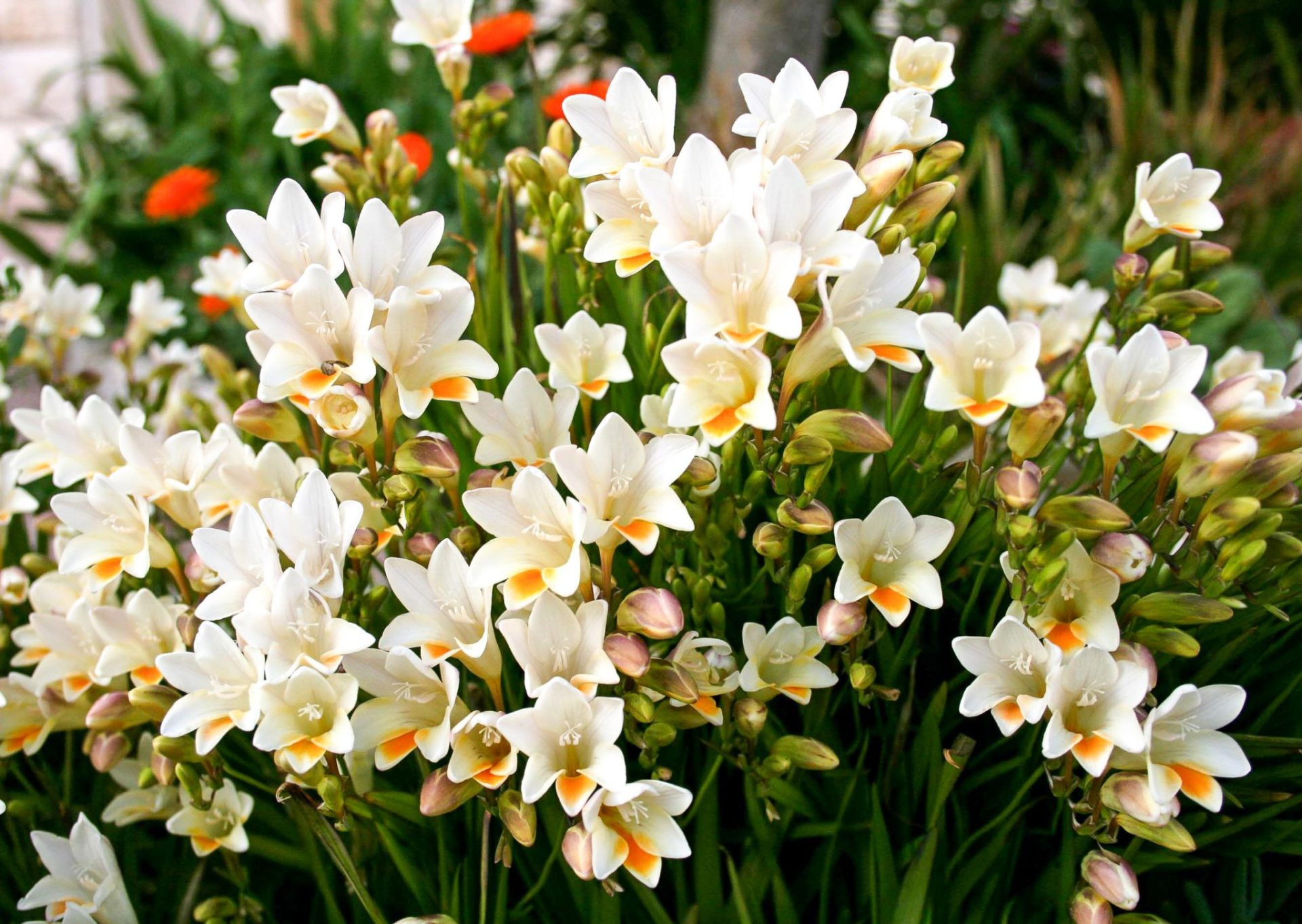
To ensure healthy and vibrant freesia plants, it is important to follow these steps. Once the tubers have dried, remove the old and withered parts and store the plump ones in sand in a cool and frost-free area. Come late April when the soil warms up, plant the tubers and consider rolling the plantings to extend the blooming season. In March or April, free the tubers from their cover and plant them outside once the risk of frost has passed. Water the newly planted tubers regularly and deadhead any faded flowers during the summer. Freesia buds and cut flowers make beautiful indoor vase decorations. When autumn comes, lift the tubers you plan to store over winter and mulch heavily over any tubers left in the ground. Fresh tubers can be planted in September to November under cover for spring flowers. In the winter, bring any freesia tubers planted in pots indoors to avoid cold weather and frost. To encourage blooming, keep the brown foliage in place until each leaf has died down and avoid removing it too soon. Frost damage and leaving the bulbs or tubers in their bag for too long before planting may also impact flowering.
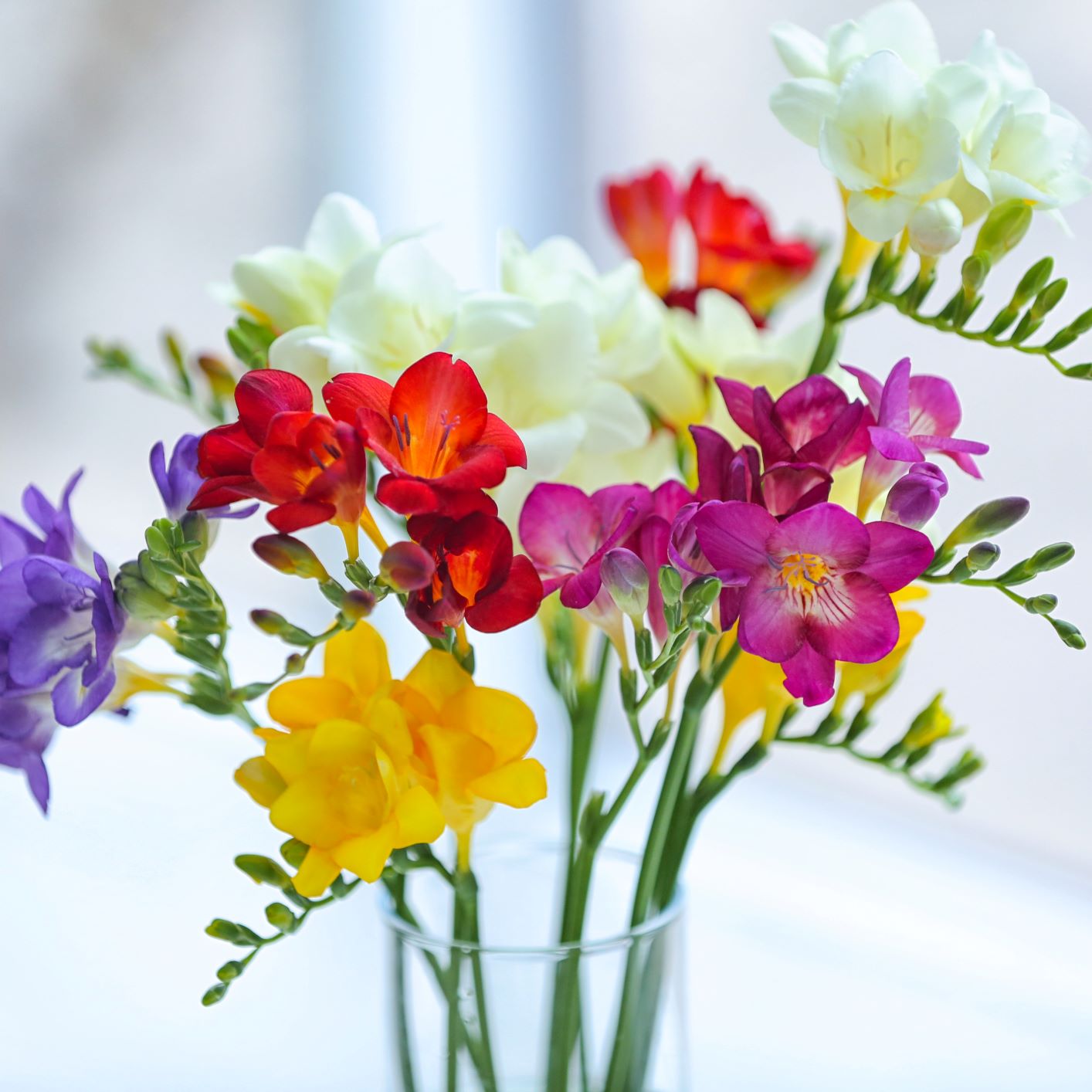
Have you been wondering why your freesia bulbs aren’t showing any growth? It’s possible that they have become a snack for mice or voles. Alternatively, frost may have caused damage to the bulbs or waterlogged soil could have resulted in onion rot.
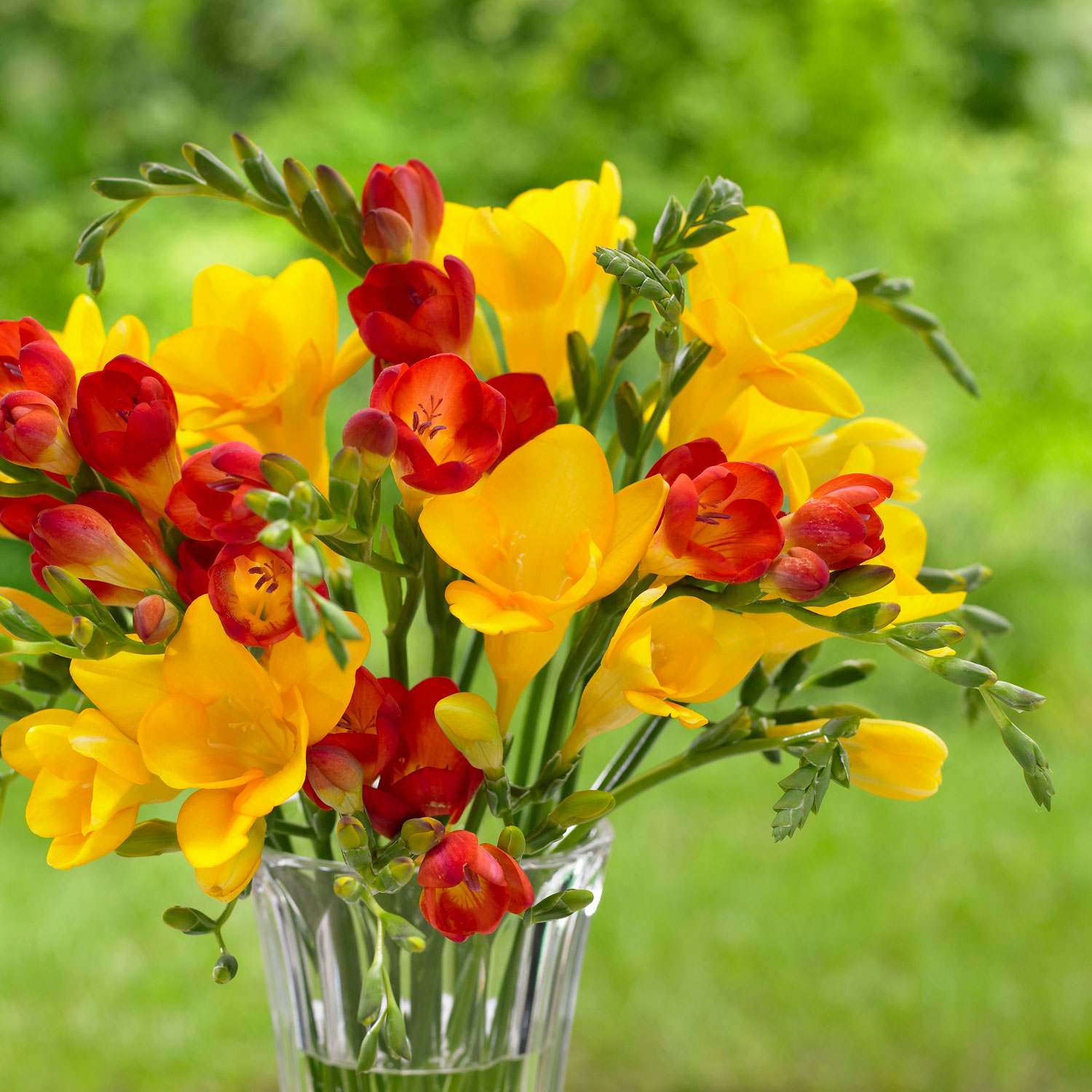
Have you noticed your freesia plants wilting lately and wondering why? Well, overwatering can be a cause of this because these plants do not like to remain wet. On the other hand, they may wilt when not watered enough, especially during dry spells. However, there is also a possibility that your freesias are suffering from fusarium disease, which is a type of fungal disease. You can tell if this is the case if you notice discoloration of the foliage and stems, stunted growth, and yellowing and wilting leaves. In such instances, it is advisable to uproot the plant and dispose of it. The soil may also be affected, so you can consider replacing it with fresh soil or avoiding planting in that area for some time.
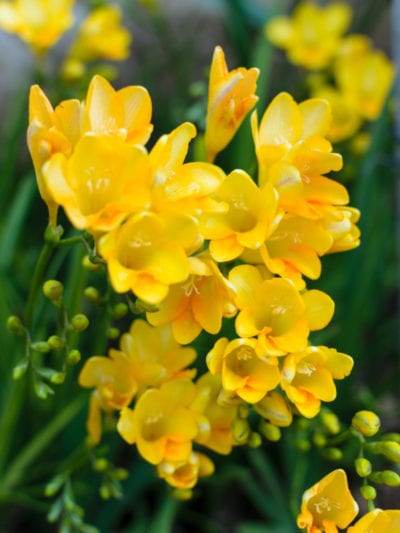
Have you noticed small spots on your freesia? This may be a sign of bacterial soft rot, which can cause the leaves to turn gray or brown. To prevent this, ensure that the soil is not too damp and that the plant is not sitting in water. Good air circulation is also important. If the infection is severe, it’s best to remove and dispose of the plant.
